calsfoundation@cals.org
Spanish-American War
On April 25, 1898, after months of discussion and negotiations concerning the revolt in Cuba, an island possessed by Spain, the U.S. Congress officially declared war upon Spain. For months, the national media, including Arkansas newspapers, had been filing exaggerated reports concerning the revolt in Cuba, stirring up anti-Spanish sentiment throughout the country. By the time of the unexplained sinking of the battleship USS Maine in Havana Harbor in February 1898, many citizens of Arkansas were ready for war.
On the same day as the war declaration, Governor Daniel Webster Jones received a message from the U.S. Department of War requesting that Arkansas provide two regiments of National Guard troops, approximately 2,000 soldiers. This was a difficult task for the governor in that the state had no well-organized guard. Funding to supply the troops had to be secured from the state’s banks and private sources. Jones proposed raising two new infantry regiments consisting of men from throughout the state, because only two State Guard companies were judged to be organized well enough to be mustered in intact. The remaining twenty companies were raised from volunteers, most of whom were serving in other State Guard companies. They were to rendezvous in Little Rock (Pulaski County).
These loosely organized companies, consisting of men from thirty-two counties, were mustered into service at a makeshift training camp located at College Avenue and 17th Street in Little Rock. The camp was named Camp Dodge in honor of the late Dr. Roderick Dodge, whose family donated the land for the facility.
Two regiments of approximately 1,000 soldiers each were created from these volunteers. On May 14, the First Arkansas Volunteer Infantry, commanded by Colonel Elias Chandler, was mustered into federal service, followed on May 25 by the Second Arkansas Volunteer Infantry under the command of Colonel Virgil Cook. Both regiments were mustered for two years “unless sooner discharged.” Before the end of the month, both regiments arrived at Camp George H. Thomas at Chickamauga Park, Georgia, where the soldiers expected to receive their basic training and assignment to Cuba.
During their deployment in Georgia, they were assigned to the First and Second Brigades, Second Division, Third Army Corps. However, the war in Cuba ended before either of the regiments made it into combat. Still, camp life in the low-lying areas of humid Georgia caused much suffering for the Arkansas men. Within four months, the Second lost sixteen men to disease.
For all practical purposes, the war concluded with the signing of an armistice in early August. When the First received its orders to return to Arkansas in late September, the Second also began to make preparations to return home. However, the Second did not receive its mustering-out orders but instead was one of the regiments chosen to remain in the service. Rumors began to spread that a soldier’s petition was circulating demanding their release or that the regiment desired to be assigned to a combat front, possibly Puerto Rico or the Philippines. Governor Jones met with President William McKinley to broker a deal whereby soldiers of the First who wanted to remain could replace soldiers from the Second who wanted to go home. It was reported that some of the First attempted to do so but were denied. By late September, the First had returned to Arkansas, where they were mustered out of the service at Fort Logan H. Roots in what is now North Little Rock (Pulaski County) on October 25. During its service, the regiment had suffered twenty-two deaths. Of those, only one, William H. Lawson of Fort Smith (Sebastian County), was not from disease; his death was the result of a target-practice accident.
At approximately the same time the First returned home, the Second was reassigned to Camp Shipp in Anniston, Alabama. Although living conditions were reported to be better, the five months spent there were not happy times, with various illnesses continuing to be a problem. Some members of the Second were involved in a race riot when a member of the African-American Third Alabama Infantry was arrested and jailed by local officials for intoxication. Apparently, members of the Third Tennessee and Second Arkansas assisted in defending the jail and participated in the violence when soldiers of the Alabama regiment attempted to free their comrade.
On January 25, 1899, the Second received notification that they were to be mustered out of the service. At the time of its official mustering out at Anniston on February 25, the regiment had lost a total of one officer and twenty-seven infantrymen to disease. Colonel Cook was the last member to be mustered out.
In the 1890s, the United States military was segregated; in black regiments, only whites served as officers above the rank of lieutenant. In Arkansas, African Americans were not allowed to join the State Guard, even though there was much patriotic fervor among black Arkansans, with reports of an all-black company being raised in Pine Bluff (Jefferson County). The door for black military service opened when the federal government authorized the enlistment of ten infantry regiments of soldiers who might be immune to tropical diseases. Four of these regiments consisted of black soldiers, referred to as “Immunes.” Recruitment began almost immediately, with the federal government requesting Arkansas to raise three companies. Once organized, these men became Companies E, F, and G of the Seventh United States Volunteer Infantry, initially serving at Jefferson Barracks, Missouri, and later in Lexington, Kentucky.
Additional Arkansas citizens served in other military regiments, including Roosevelt’s famous Rough Riders. Stokeley Morgan of of Mount Holly (Union County), a sailor on board the USS Olympia in Manila Bay, fired what some consider to have been the first shot of the war on May 1, 1898. Elizabeth Chapline Herndon of Little Rock was the only volunteer Red Cross nurse from Arkansas to serve during the war. On March 9, 1899, the state’s military service in the war concluded when the Arkansas General Assembly passed a joint resolution commending the soldiers.
A war of such short duration had minimal impact on the home front, although an increase in prices affected everyone. Newspapers regularly reported on war events, with one Batesville (Independence County) soldier supplying a daily report for the local paper. While most supported the war, others, such as Senator James Henderson Berry, opposed the continued imperialism in the Philippines, which caused what he referred to as an “unjust and unholy war.” In 1901, Representative Hugh Dinsmore of Fayetteville (Washington County) was appointed to serve on a congressional committee to investigate conditions in the Philippines. An interesting effect of the war was the lessening of tensions that remained between North and South after the Civil War. The Spanish-American War was a major opportunity for citizens of the former Confederacy to show loyalty to the Union. In the Second Arkansas Volunteer Infantry alone, ninety-six percent of the men were descendents of Confederate veterans.
For additional information:
Davidson, Bertha. “Arkansas in the Spanish American War.” Arkansas Historical Quarterly 5 (Autumn 1946): 208–219.
Hempstead, Fay. Historical Review of Arkansas. Vol. 1. Chicago: The Lewis Publishing Company, 1911.
Herndon, Dallas. Centennial History of Arkansas. Vol. 1. Chicago: S. J. Clarke Publishing Company, 1922.
Morrow, John. “Batesville’s Involvement in the War with Spain, 1898–1899.” Independence County Historical Chronicle 15 (October 1973): 4–43.
Report of the Adjutant General of the Arkansas State Guard 1897–1900. Little Rock: Thompson Lithograph and Printing Company.
Robertson, Brian K. “‘Anxious to Get Some Scrapping’: Spanish-American War Letters from Arkansas Soldiers and Sailors.” Arkansas Historical Quarterly 81 (Summer 2022): 157–202.
Wolfe, Susan. “Arkansas and the Spanish American War.” Ozark Historical Review 2 (Spring 1973): 27–47.
Mike Polston
CALS Encyclopedia of Arkansas
 Post-Reconstruction through the Gilded Age, 1875 through 1900
Post-Reconstruction through the Gilded Age, 1875 through 1900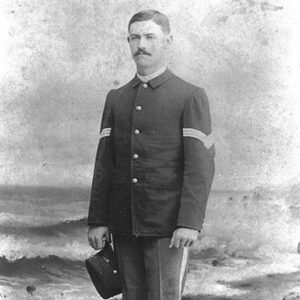 Jefferson Brewer
Jefferson Brewer 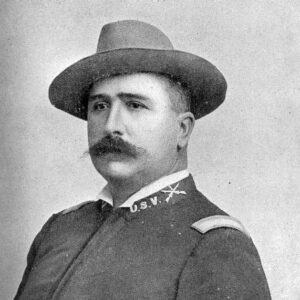 Elias Chandler
Elias Chandler  Eureka Springs War Memorial
Eureka Springs War Memorial 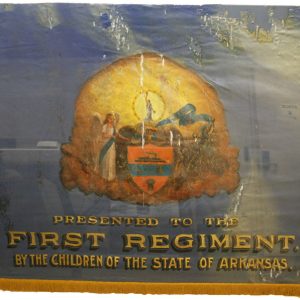 First Regiment Flag
First Regiment Flag 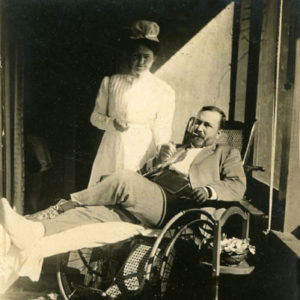 Elisabeth Herndon
Elisabeth Herndon  Judsonia Army Band Performance
Judsonia Army Band Performance 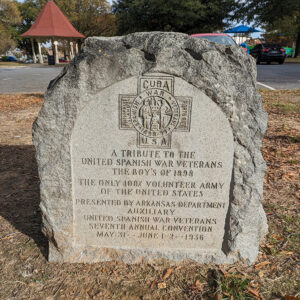 Spanish-American War Memorial
Spanish-American War Memorial 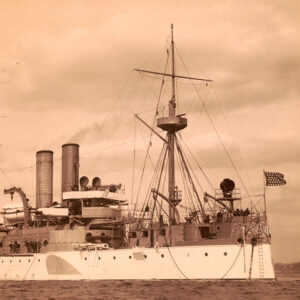 USS Maine
USS Maine 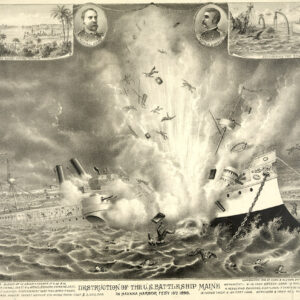 USS Maine Destruction
USS Maine Destruction 




Comments
No comments on this entry yet.